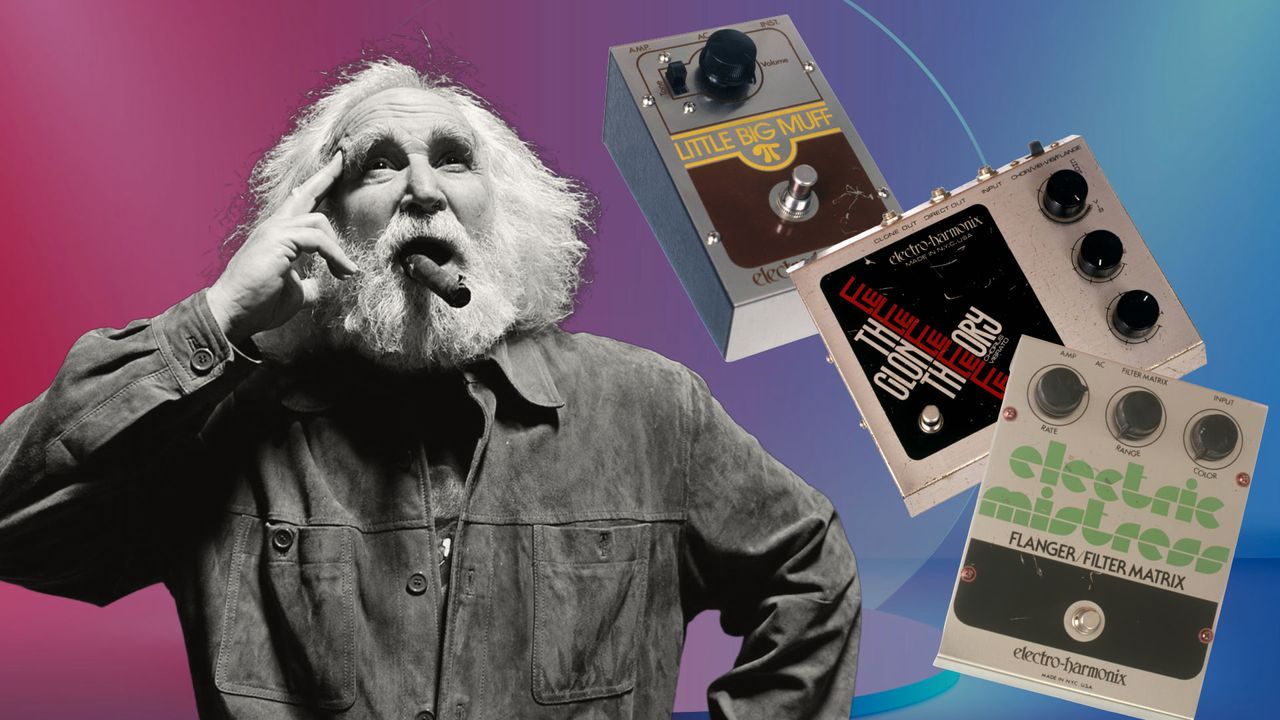
Few effects firms have had the impact or commanded the universal adoration of Electro-Harmonix. Without it, it’s highly likely that the pedal market – plus guitar playing and music itself – would look and sound very different in 2025.
The brand launched by Mike Matthews enjoys a position few others could manage. It’s become one of the most ubiquitous names out there, but maintains the aura of an indie builder. It’s both boutique and accessible; wild and dependable; liberal in its experimentation and, since its 1990s revival, conservative in its business.
Products like the Big Muff, Small Clone and Small Stone have not just entered pedal history, but become the foundation stones for a whole industry of builders, spawning a mythology almost independent of the music they made.
Of all the brand’s eras, the late ’70s period is its most iconic and fetishized –and it’s easy to see why. This is an incomplete story of that time, told through the memories of Matthews, key EHX employees and friends from the period.
More particularly, it’s about the firm’s space-age physical location, the Hall of Science – a giant, all-singing, all-dancing (but non-selling) venue-cum-demo space that became a bricks-and-mortar metaphor for the peak of EHX’s outrageous, risk-taking pomp.

Million-dollar baby
Between 1968 and 1978 EHX debuted the LPB-1, Big Muff Pi, the Electric Mistress, the Memory Man and the Small Stone. To say it grew rapidly is an understatement: a firm that started with little more than Matthews’ $1,000 savings expanded to a $50,000 annual turnover, and on to $5 million within 10 years. In today’s money, that’s around $24 million.
“I started working for Mike right out of my first year of college,” says Matt Meng, former Director of Manufacture and Development. “I think I was employee number seven. By the time I left in 1980, Mike had about 350 employees.”
Matthews is renowned for his off-the-wall thinking, and Meng believes it was never further from the studwork than in the ’70s.
“As someone in my 20s and late teens, it was wonderful to work for him. He had all these crazy ideas. I’d describe him as a genius, but a madman – a real crazy scientist.”
That’s one of several images Matthews has fostered over the years, albeit not unfairly. “I just did unorthodox things,” says the man himself, now in his 80s.
In some ways that’s the whole mantra of EHX’s golden era – from the tones and the business model to the way they worked. As King Crimson and David Bowie guitarist Adrian Belew says: “The thing I always loved about their pedals was that you could make them do things they weren’t actually meant to do.”

The guitar pedal Ark of the Covenant
By the late ’70s EHX was riding high – and so was New York’s West 48th Street, aka Music Row. At the time it was the world’s leading music mecca, home to ruthlessly guarded ‘Are you ready to buy?’ guitar stores and a surefire pitstop for the great and good of players, from wannabes to session pros and touring superstars. Everyone was there, spending their advances and buying up vintage guitars like candy.
At this point, Matthews came up with one of his most unorthodox ideas: a way to get EHX gear in front of those at the center of the musicians’ universe. He called it the Hall of Science.
Even those in the know find it notoriously hard to describe the concept; but picture an Apple Store for pedals and music tech, painted black throughout, and you’re sort of there. Except you couldn’t buy anything.
“It’s the pedal equivalent of finding the Ark of the Covenant,” says Josh Scott, JHS founder and devoted EHX scholar. “It’s very difficult to explain; It’s weird. At first we couldn’t even decide what it was – ‘It's a store. No, it’s not a store, It’s a venue.’ You’d just go in a circle!”

Adding to the mystery is the lack of photos and online documentation. Even Matthews laments that he doesn’t have any pictures. And because it wasn’t a proper retail space, and the company later went bust, there are very few records.
But if the Hall of Science seems ahead of its time, and a little crazy, it’s because it definitely was – it predated the likes of the Gibson Garage, Fender flagship stores and indeed the Apple Store by decades.
“The idea was Mike’s,” confirms EHX lifer Larry DeMarco, who was tasked with running the place. “He was always a visionary. The idea of a standalone exhibition center was truly revolutionary in the late ‘70s.”
West 48th Street was already packed, of course. “There were about 15 different music stores – Manny's Music, Sam Ash, Terminal Music, repair shops – everything,” says Matthews. But as usual he spotted an opportunity others had missed. “There was a four-story garage. On the bottom floor we rented half of that space. It was pretty big. We turned it into the Hall of Science.”
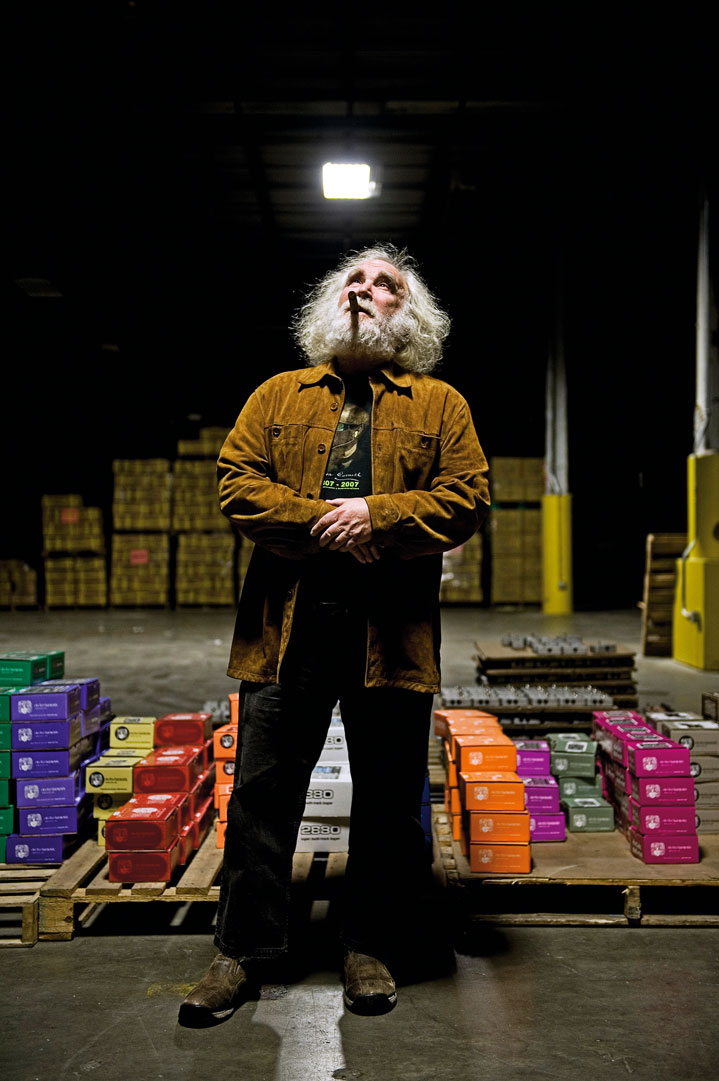
In the gutter, looking at the stars
Mention of Apple Stores might conjure images of spotless brightness and exquisite presentations. But it’s important to note that this was New York in the 1970s; those terms did not quite apply to West 48th Street at that point.
“New York City back then was rough,” DeMarco recalls. “Times Square and the surrounding environs were packed with peep shows and porno joints. Hustlers, hawkers and three-card-monte games were all over the place. We were located a bit north of Times Square between 6th and 7th Avenues. You never knew who or what was going to come through the doors.”
That’s if you could get through them. “It was disgusting!” Meng says. “I remember opening up one morning. You had gates that came down with padlocks on the bottom. I remember finding vomit on the padlock and saying, ‘How do I how do I open this this? I can’t even go in and get a bucket of water to rinse it down!'”
If you made it safely inside, however, you found a veritable candy store for audio pioneers. “The entire place was done in black,” says DeMarco. “There was a stage that stretched across the back of the room and behind the stage was a wall-to-wall LED display that blinked randomly – but it always seemed to be in time with the music!
At first Manny's was pissed off that we opened it, because they thought we were gonna start selling stuff from there – but we didn't
Mike Matthews
“Black wooden benches provided seating; on the east side of the room, self-demo stations were provided, where people could wank away and hear themselves through headphones.”
To your right as you entered were the glass display cases. It would make sense to fill them with pedals; but no – instead they were filled with EHX-branded LED jewelry. Above, the ceiling was adorned with electric artwork.
“I got plastic pallets, four feet by four feet, put LED bulbs in them and hung them from the ceiling,” says Meng. “Our engineers designed the patterns, so no pattern would repeat itself, and they were multicoloured. I remember it was certainly very futuristic, very out there and very mesmerizing.”
Meanwhile, the stage was used for live demonstrations, which more often than not seemed to unravel into jam sessions. “It was very beautiful,” says Matthews. “At first Manny's was pissed off that we opened it, because they thought we were gonna start selling stuff from there – but we didn't.”

Looking for a sound you’ve never heard before
Matthews maintains he held to his agreement not to sell gear. But always open to making a buck, they did shift the artwork, to everyone from Bloomingdale’s to Gallery Lafayette in Paris.
Meanwhile the jams were legendary, with a different genre days and prizes given to the best performances. Alongside running the joint, DeMarco was part of the in-store band alongside guitarist/bassist Kenny Richardson and drummer Larry Holloway.
“Kenny and Larry were wonderful musicians,” DeMarco says. “I typically played through the same rig I used at trade shows. The chain started with a MicroSynthesizer and ended with a Deluxe Memory Man. Larry had a setup of EHX Talking Drums – he made them talk and sing!
I’d record a percussive guitar sound in one box. I had eight boxes on a stand. It was early sampling – crude as it was, you’d never heard anything like it
Adrian Belew
“Occasionally we’d get an oddball product in. I recall a 19-inch rack-mount guitar synthesizer, festooned with a cryptic array of sliders and no presets. You’d dial up an incredible sound by fiddling with the sliders. But move them a fraction of an inch and that great patch would be lost forever! I’m not sure it ever made it to market…”
The fact stuff like that saw the (LED) light of day at the Hall of Science is part of its allure to EHX obsessives, and anyone who was fortunate enough to wander through the doors on a Saturday afternoon. Belew recalls: “I’d go there and, of course, Mike Matthews would just talk my arm off about all the new pedals they were designing, and show me some of them.
“I’m one of the players still digging around for a sound I’ve never heard before. And that’s what made Mike’s pedals unique – if you played around with them long enough, something really strange would happen!”
Science and celebrity
The Hall of Science was the perfect venue for such experimentation, in the booth or on the stage – and the performances didn’t stop inside the building. “One time Mike asked me to demo some pedals live out front of the store,” Belew says. “Like, ‘I’ve got these new boxes. You record a sound into them and then you can play them like a drum kit.’ And we did that right out on 48th Street!
“I have no idea what it must have sounded like, but there was a band backing me. So I’d record a percussive guitar sound in one box at a time then play drum patterns with the band. I had about eight boxes on a stand. Really, it was early sampling – and crude as it was, you’d never heard anything like it.
“Mike was very generous to me and all the other players I knew who worked with him. You could always depend on him inventing things no-one had ever thought of before and giving them crazy names.”
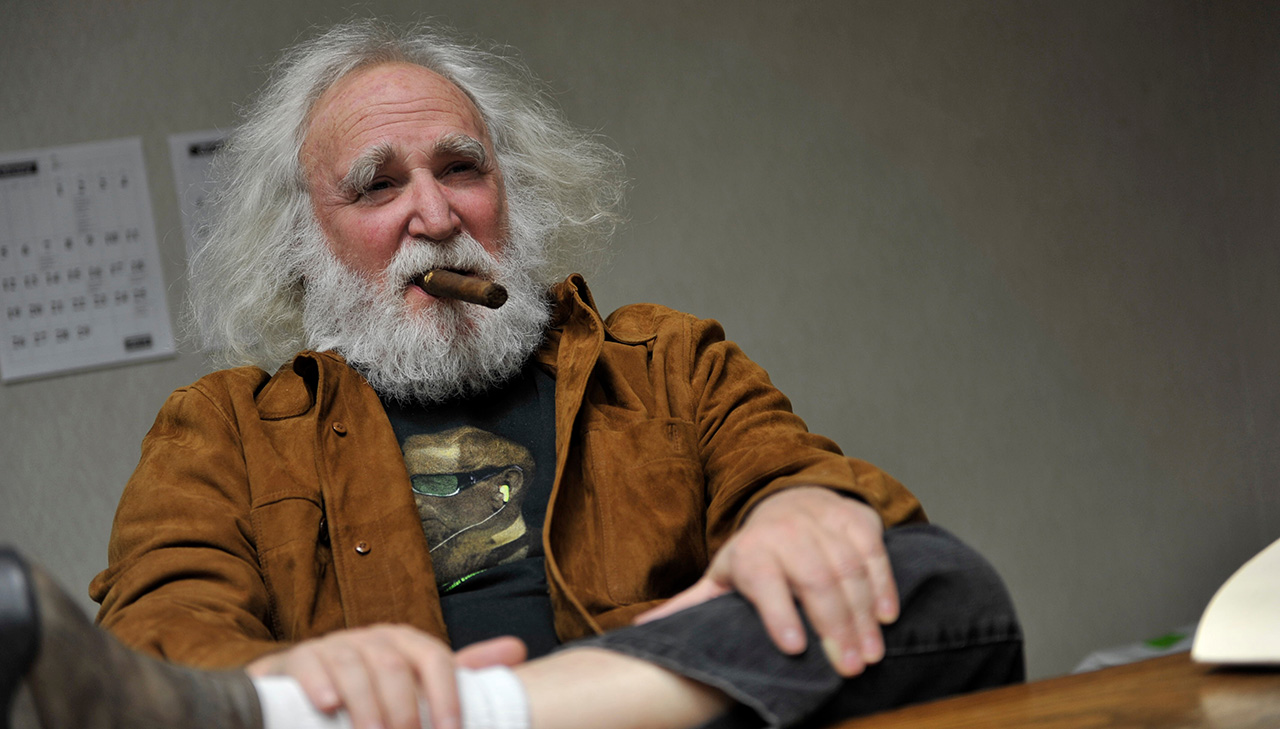
Despite, or perhaps because of, Matthews’ agreement to only sell artwork from the space, it drew all kinds. “We welcomed everyone from Stevie Wonder to Buddy Rich,” says DeMarco. “I remember Howard Leese of Heart bought a huge LED display from me. A young Marcus Miller jammed out on stage. Tennis star Vitas Gerulaitis pulled up out front in his Rolls Royce with a vanity plate that proclaimed ‘VITAS G’!”
Matthews remembers getting a call at the office to be told Roberto Durán – one of the greatest boxers of all time – had just walked in. “He started flirting with my common-law wife,” recalls Matthews. “I was thinking about slugging him. But I held back because he was a professional and he’d have knocked me out!”
It’s hard to think of another gear spot with this kind of pull. Even today, when the cult of guitar gear has never been stronger, it’s mainly around vintage collections. The idea of a space stocking cutting-edge, slightly bonkers audio products and pulling in A-listers in the process seems unimaginable. And yet it happened; and that was only part of the picture.
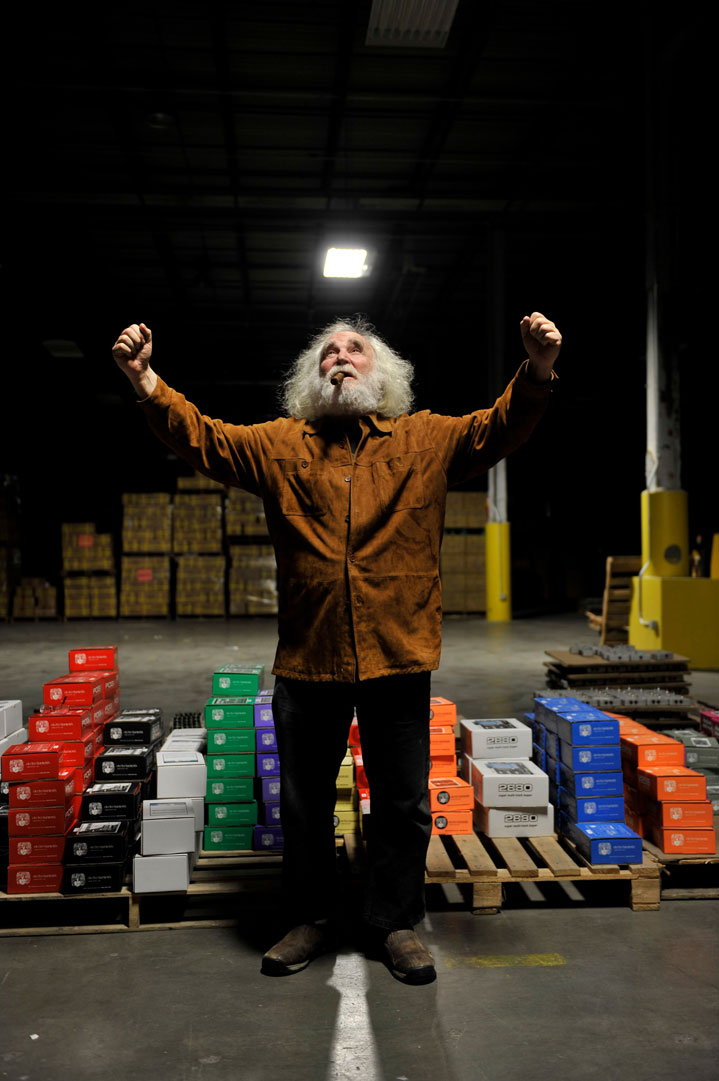
We felt invincible
While all that went on, Matthews was back at EHX HQ leading the charge on his ever-expanding line of pedals, and more products with forward-thinking specs and madcap marketing schemes. For instance, the first battery-powered amp, 1975’s Freedom amplifier.
At three o’clock in the morning Mike wanted to meet me at the intersection of some road. We’d walk for hours before starting the day at Electro-Harmonix
Mike Meng
“I remember renting a truck. It had to be an American-made truck,” says Meng. “We put custom-made umbrellas on it to demonstrate wind energy. We were driving down Fifth Avenue so the movement simulated the wind – and we had a press conference about how ‘the answer is blowing in the wind!’”
The Freedom amplifier took an unholy amount of size D batteries, but nonetheless campaigned on the appeal of “freeing yourself from the bureaucratic domination of electricity.” Essentially it was the first prepper amp. And again, this actually happened.
“It was an incredible period for Mike, EHX and, by extension, myself,” says DeMarco. “In addition to running the Hall of Science, I did a lot of traveling and demoing. Crazy stuff like doing a show solo in East Germany before the fall of the Iron Curtain.
“I had to travel through Check Point Charlie and take a train from East Berlin through Dresden and into Leipzig. I got stopped on the train and questioned by the East German police. Every place in East Germany looked as it did the day WWII ended.

“I carried the EHX banner around the world, from Fiji to Stockholm, and was with Mike in Russia as a member of the EHX Work Band. We felt invincible.”
Matthews’ sheer charisma is well-documented. “It was wonderful,” says Meng. “I was sent off to do things I knew nothing about! I’d studied business management in college, but I didn’t even finish my fourth year because I was so into Electro-Harmonix. I learned so much more hands-on than in school.
“I remember getting up at three o’clock in the morning because Mike wanted to meet me at the intersection of some road. I’d go meet him and we’d walk for hours before starting the day at Electro-Harmonix. He was, at times, up all night doing things.”
The sense of EHX and Matthews’ invincibility strikes a chord with Meng, too. “Mike showed up at my apartment once and I was cooking a roast beef. He loved the smell of it. Talking business, he actually ate the whole five-pound roast beef! I don’t even know if he was aware he’d done it.”
The death of a dream
Of course, nothing we make is truly invincible. You’ve seen the films; you know the story arc. By the late ’70s EHX was flying too close to the sun, but it wasn’t sheer folly that brought about its end.
It taught me that even if all the ideas are wonderful, you need good people to help implement them
Mike Meng
Its successes were being noted. New York’s labor racketeers were trying to muscle in, causing trouble for staff and production issues in the process. Cracks were starting to show in Matthews’ “unorthodox” financial approach. By the early ’80s the Hall of Science was no longer sustainable, and Matthews sold the unit to Sam Ash.
“I don’t remember when the doors closed,” says DeMarco. “But I remember how I felt – ‘gutted’ is an apt descriptor. Electro-Harmonix was more than a job to many of us. When the company folded, it was the death of a dream we’d all shared.”
When Matthews re-entered the pedal world in the ‘90s, having noticed the price of vintage EHX units, it was in his own words as “an arch-conservative,” as opposed to his previous “aggressive” position. But some of his hunger for experimentation remained.
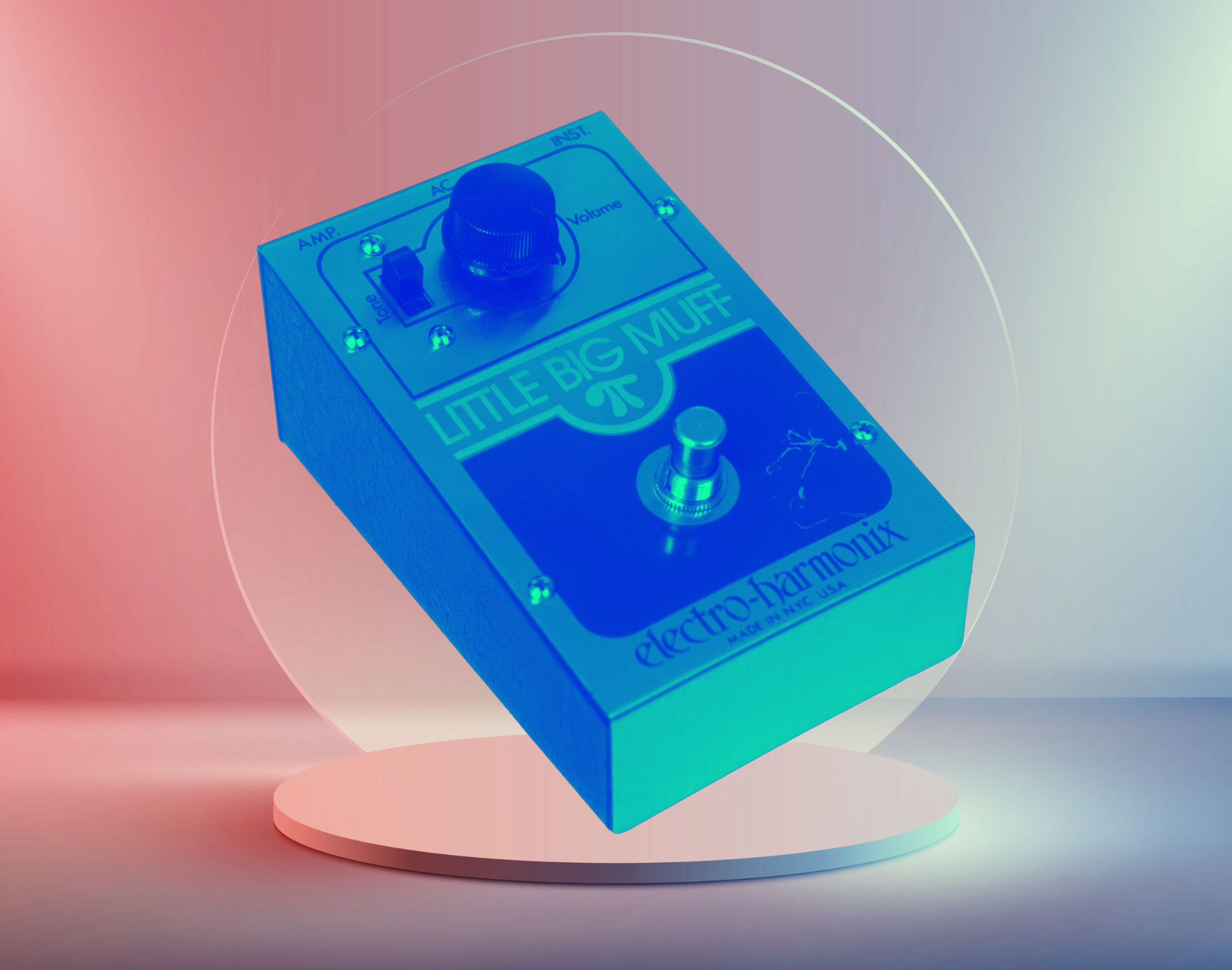
All those involved in the Hall of Science have left their own legacies. “It taught me that I could do whatever I put my mind to – and that you really needed a team effort,” says Meng, who went on to a successful career outside EHX. “Even if all the ideas are wonderful, you need to have good people to help implement them.”
There must be lessons to be learned by struggling modern retailers; stores and brands need to offer experiences to get people in the door. It’s what we’ve seen at Fender Flagship Tokyo and the Gibson Garages. Stores can’t just tell people a story anymore – you need to put people in it. That was the genius of the Hall of Science concept. Although we recommend you actually sell the gear from the space…
Josh Scott is, of course, a noted pedal maker in his own right. He’s studied the EHX golden period in detail, and is literally writing the book on the firm. He says his research, and personal interactions with Matthews, taught him two things.
“When you look at their story, EHX is at the top of the world. It’s a movie plot,” Scott says. “The biggest thing – and it's exactly what he said to me – is be careful that your really good ideas are actually good for your business. That’s big.”
It’s the second point that nails not just the essence of EHX, but the reason musicians adore their products; and it also defines the real allure of the Hall of Science. Scott says: “Give creative people the space to make things – and see what happens.”
Do you have any photos of the EHX Hall of Science? We'd love to see them! Get in touch via guitarworld@futurenet.com.
Likewise, if you have any memories of the space, or Music Row and West 48th Street in the ’70s and ’80s, please share them in the comments below...







